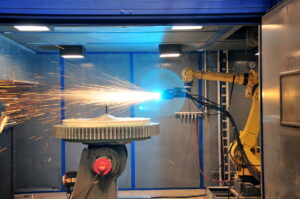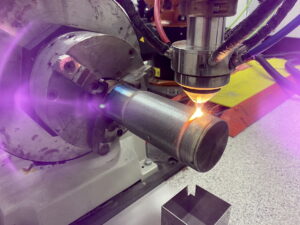
Laser metal deposition (LMD) is a repair technique that can be used for the restoration of many components used in rotating equipment similar to methods like conventional welding and high velocity oxidized fuel (HVOF). The range of repairs that can be achieved using LMD is extensive. From restoring worn bearing journals and seal areas to renewing steam turbine blade leading edges and the impeller vane tips of pumps.
The laser in the LMD repair process offers benefits beyond what both HVOF and submerged arc welding provide. The most obvious is the reduced heat input, which minimizes distortion, reduces the heat-affected zone (HAZ) and almost eliminates the need for post-weld procedures. At the same time, the metallurgical bond of LMD assures excellent consistency in material density and perfect adhesion with the parent material of the component.
 LMD is the latest addition to Sulzer HICoat’s range of solutions, offering a variety of materials including Inconel® 625 and Stellite® 6 as well as others for hard-facing, improved corrosion resistance, and general dimensional restoration.
LMD is the latest addition to Sulzer HICoat’s range of solutions, offering a variety of materials including Inconel® 625 and Stellite® 6 as well as others for hard-facing, improved corrosion resistance, and general dimensional restoration.
With over 25 years’ experience in delivering coating solutions for rotating equipment, Sulzer HICoat has extensive in-house expertise and cutting-edge facilities. LMD can be used to re-establish original dimensions in the repair of shafts up to 23 feet (7 meters) in length and 50’000 lbs (25 tonnes) in weight, impellers measuring up to 94 inches (2.4 meters), casings and diaphragms.
Same theme: Using laser metal deposition to repair lean amine pump impeller












